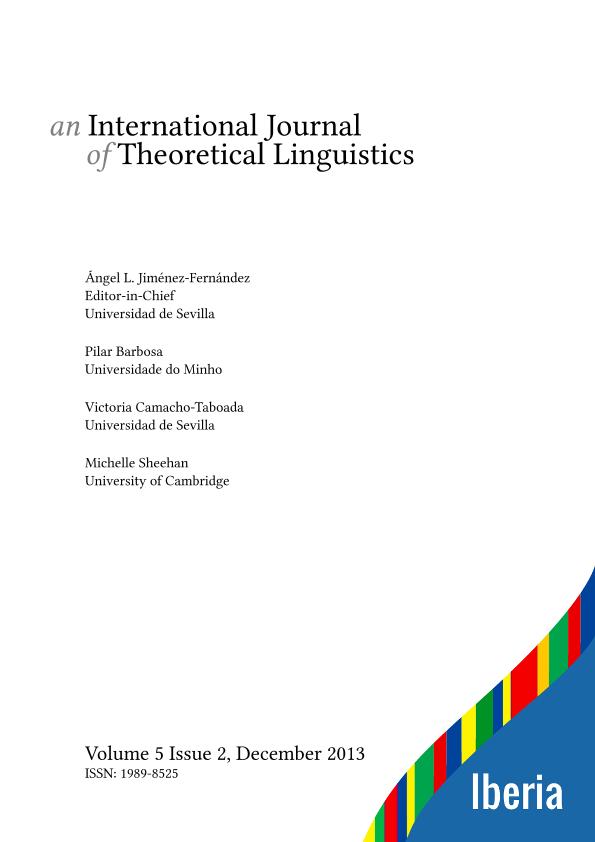Artículo
Not always a stage: a typical patterns in Spanish copular clauses
Fecha de publicación:
12/2013
Editorial:
Universidad de Sevilla. Facultad de Filología
Revista:
Iberia
e-ISSN:
1989-8525
Idioma:
Inglés
Tipo de recurso:
Artículo publicado
Clasificación temática:
Resumen
The present paper focuses on cases that challenge the classical definition of the Spanish copula estar as stage-level, temporary or unstable predication by patterning with individual-level predicates (associated, by definition, with ser, rather than with estar). More importantly, data also indicates that the choice for estar over ser is not semantically nor syntactically trivial, even in those contexts where similar aspectual implications are involved (i.e., even in the delivery of IL predicates). Accordingly, we aim to show that (i)the distinctive semantic properties of estar occurrences follow from its conceptual construal as a location (in either concrete or abstract space); and that (ii)a different implementation of an implied comparison approach to the IL/SL distinction (cf. Franco & Steinmetz 1986) could succeed in capturing the two kind of predications rendered by estar in way that is more in tune with its primary (locative) semantic properties. Moreover, we will claim that a view on semantic content sensitive to cognitive operations available for locative predicates (e.g., perspectival location) may correctly account for different facets of meaning classically ascribed to this copula (e.g., contrastiveness, subjectivity) as well as for the semantic and syntactic patterns restraining the selection of both the DP subject and the adjectival predicate.
Archivos asociados
Licencia
Identificadores
Colecciones
Articulos(CCT - ROSARIO)
Articulos de CTRO.CIENTIFICO TECNOL.CONICET - ROSARIO
Articulos de CTRO.CIENTIFICO TECNOL.CONICET - ROSARIO
Citación
Mangialavori Rasia, Maria Eugenia; Not always a stage: a typical patterns in Spanish copular clauses; Universidad de Sevilla. Facultad de Filología; Iberia; 5; 2; 12-2013; 1-37
Compartir




